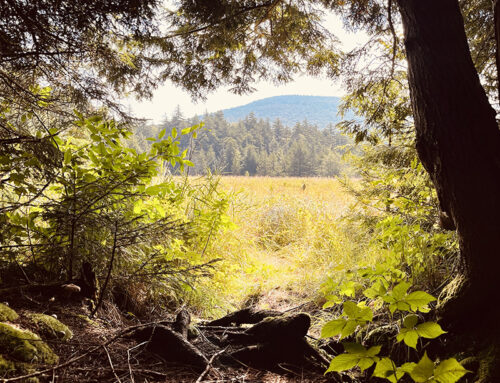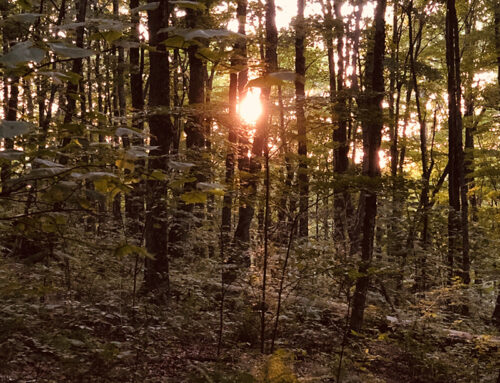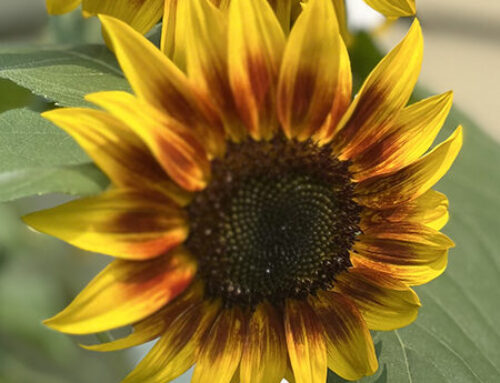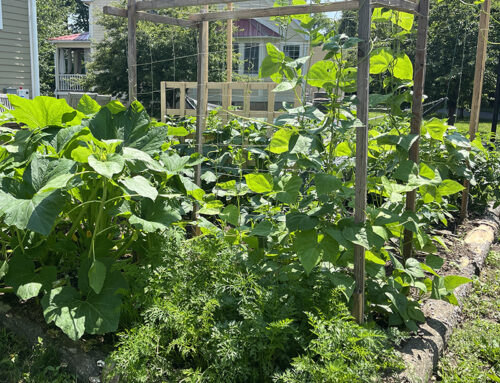Radical & Revolutionary: Looking to Nature for the Answers
Often these days, when I tune in to news reports or listen to the ongoing hum of our culture, I find myself overwhelmed. Everywhere we look we are presented with challenges. They surround us in the world in the form of climate change, inequity, social injustices. They fill up our inner lives with doubts about our self-worth, fitting in, and having enough. We look down at our phones and check in with Google to try to find the answers, to heal ourselves and the world in which we live.
What if instead of looking down for the answers, we looked up and out at the world around us?
I recently attended the Inside Out Conference of the Children and Nature Network. On the final day of the conference I had the opportunity to listen in to a roundtable discussion with José González, Co-founder, and Gabaccia Moreno, Executive Director of The Outdoorist Oath – a global commitment for planet, inclusion, and adventure. Their conversation filled me with hope, and reminded me that we all have the potential for a reciprocal relationship with nature that builds upon itself.
When we slow down our busy lives and rekindle our relationship with nature, we find evidence that we live in a world of abundance and renewal that is able to meet our needs. Looking to nature for the answers, the following ideas reveal themselves:
We are Radical & Revolutionary
“Be in nature, as nature, in the radical and revolutionary balance.” – José Gonzalez, Co-founder, The Outdoorist Oath
Delving into the origins of these words, we find inspiration to work with each other instead of pushing against the world.
Radical was first an adjective, originally from Latin radix, meaning “root” (Merriam Webster). For roots to be healthy, they have to grow in relationship to the soil they are in, exchanging nutrients and water, along with negotiating a shared space. To be radical, we must be rooted, and have an understanding of the land which supports us.
Similarly, to be revolutionary is to return to lives based on circles and cycles. From the 24-hour turn of our planet, to the monthly waxing and waning of the moon, to the seasons resulting from our 365-day journey around the sun, our lives are made up of growth and decay, action and rest, ebb and flow. We have opportunities to have experiences, learn and grow from them, and return to make things better. And as we heal ourselves in nature, we heal nature.
We are a Mycelial Network
When we walk through the forest, beneath our feet lies the “Wood-wide Web.” This network of roots, fungi, and microorganisms rivals the internet for its ability to carry messages and nutrients to support the individual plants and trees we see above ground. Serving as connectors are mycelium – the microscopic threads of fungi that wind through the soil and produce the fruiting bodies we recognize as mushrooms when the conditions are right. In a healthy forest, each organism benefits from this mycelial network that stretches for acres underground. Recent research shows that this network also lets trees communicate with each other.
Just like the forest, as a social species humans thrive based on our connections. An 85-year old Harvard Study found that the most important factor in determining happiness and longevity is positive social relationships. When we share our lives with a network of friends and family, we not only receive love and support, but we have the ability to share ideas and work together to address the challenges that impact us.
We are a Thriving Meadow
Many of us may have heard the phrase in our workplace – “You are functioning like a well-oiled machine.” This brings to mind an image of being a cog, doing the same thing in the same way every day, because if something is out of place the whole thing will break down.
In their conversation, José and Gabaccia challenged us to think of ourselves instead as part of a thriving meadow. A healthy meadow is represented by diverse species, all working together to create a habitat that meets their needs. A healthy meadow can respond to changing circumstances, whether it’s pushing their roots deeper to access groundwater during times of drought, or having taller grasses shield more sensitive ground cover plants from intense sun. In a thriving meadow each species, and each individual member, has a role to play in both creating and sharing resources to support the health of the whole.

The natural world has been working through challenges for approximately 4.5 billion years. It’s worked through climate change, and it’s always had enough. It is time for us to remember that we are a part of this world, and that we have the potential to evolve and grow and thrive through the challenges that appear within our lives and communities. Today and in the days to come, I encourage you to take some time to seek your own answers from the world around you.






Leave A Comment